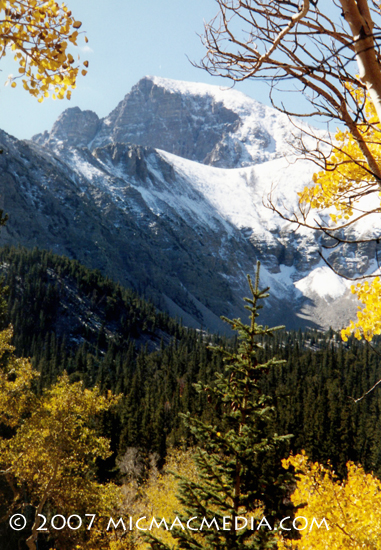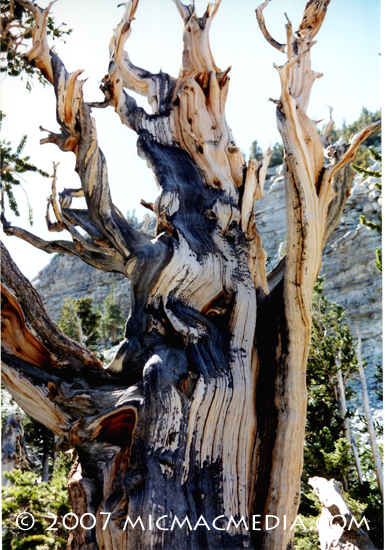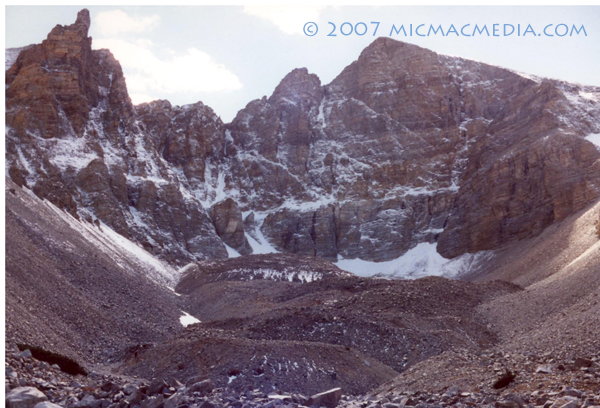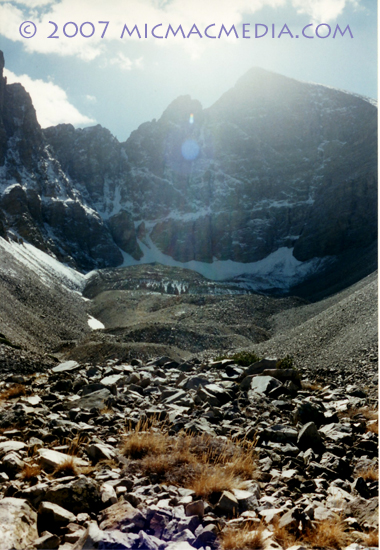 |
|
|
Follow Mark on Facebook for more stories |
||
 |
|||||
|
Tahoe Nugget #123 Great Basin National Park In early October 2004, I took a quick trip out to Great Basin National Park in eastern Nevada. It's a solid 8-hour shot east of Lake Tahoe on Highway 50, the "Loneliest Highway in the World," or so they say. The park is located near the Nevada-Utah border, about 65 miles east of Ely, and is one of the most isolated and least-visited national parks in America. My visit to GBNP was very short, only one long day, but it was great. Due to my tight schedule, I had to skip on a tour of the nearby Lehman Caves, a spectacular limestone and marble ecosystem created over millions of years by seeping water. Next time I'm out that way I'll definitely make time for some spelunking touristo-style. Caves are open year-round. During my day of hiking various trails at Great Basin, Nevada's only national park, I encountered just 3 people (not counting the two rangers at the visitors center). One of them was an older gentleman who had been hiking the area for more than 40 years, long before the park was established in 1986. The place had been previously been known as Lehman Caves National Monument, created in 1922. I'm told the caves are terrific, but the main event is the alpine scenery centered around Wheeler Peak. At 13,063 feet in elevation, it is the highest peak in the Snake Range and the second highest mountain in Nevada. Often called "Windy Peak" by hikers and climbers, Wheeler Peak is just 81 feet shy of the state's high point, Boundary Peak, on the California border. Below Wheeler Peak, you can find jagged glacial cirques, a forest of 5,000-year-old Bristlecone Pine trees, and the only glacier in the Great Basin. Wheeler Peak towers nearly 8,000 feet above the surrounding valley floor and there are dramatic changes in climate and biology in the life zones between the two. Wheeler Glacier is the only permanent body of ice between the Sierra Nevada and Wasatch ranges. The Bristlecone Pine trees that grow nearby in the cold, arid climate are the oldest living things on the planet. And the region is so distant from any city lights that it has some of the darkest skies in the country, perfect for summer stargazing. So next time you're in the middle of nowhere, or White Pine County, Nevada, make sure you stop in at Great Basin National Park. You'll be glad you did. Photo #1: Wheeler Peak is the real deal. Summer thunderstorms are common and winter storms severe. Photo #2: The Bristlecone Pine is slow growing with a fine-grained, resinous wood that is resistant to decay. This tree died in 1400 A.D. and is still standing firm against the elements. Photo #3: This Bristlecone was born in 1250 B.C. and is still alive. These pines have a great reluctance to die and they will often cling to life for centuries after reaching old age. Photo #4: The mounds of ice in Wheeler Glacier are covered in rock beneath the cirque. The glacier is 40 to 50 feet thick at this time. Photo #5: Wheeler Glacier is retreating due to climate change. Photo #6: The rugged high country terrain around Wheeler Peak is not for the faint-hearted hiker or climber. Note evidence of rock scouring due to glaciation.
|
|||||
|






